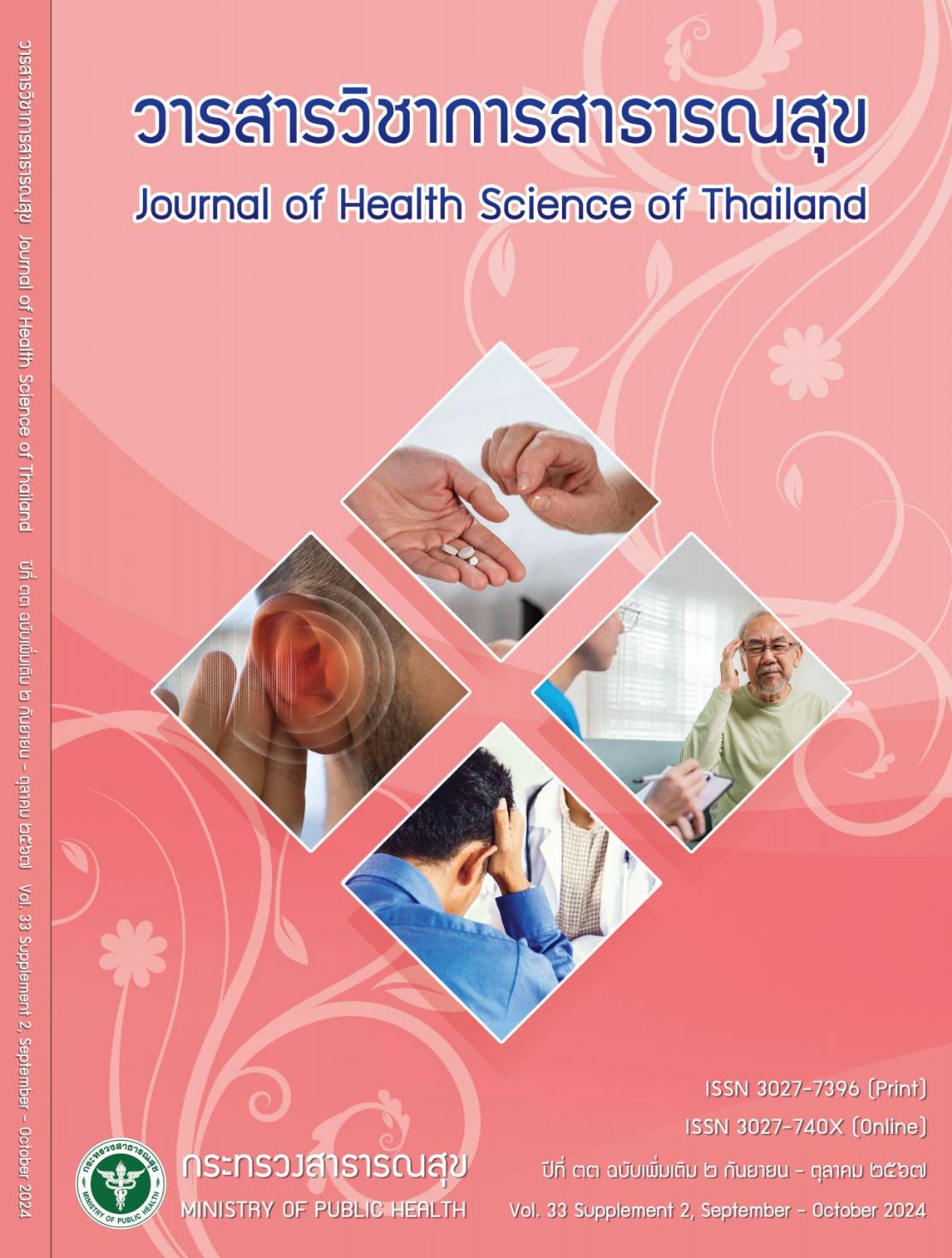Development of the Chronically Ill Patient Service Model to Reduce Overcrowding in Sub-district Health Promoting Hospitals under Corona virus Disease 2019 Pandemic Situation at Khok Yang Sub-district, Prakhon Chai District, Buri Ram Province
Keywords:
developing health service delivery model, chronically disease patients, reducing hospital congestion, corona virus disease 2019Abstract
This research is an action research with the objective of developing a model for chronic disease clinic
services in Khok Yang Sub-District Health Promoting Hospital. Under the situation of the outbreak of
corona virus disease 2019, the samples in this study were divided into 2 groups: the group 1 was 228
chronic disease patients, selected by purposive sampling, and the group 2 was 100 members of the
health network in the area consisted of physician, public health officials, presidents of local government
organizations, community leaders, public health volunteers, and community health leaders selected by
purposive sampling. The study was conducted from March 2020 to February 2021. Data were collected
from the health database system of the service units and focus groups. The research was conducted in 5
steps: (1) situation analysis step, (2) activity planning step, (3) operation and observation step, (4)
practice reflection step, and (5) evaluation step. The assessment approach was in accordanc with the
guidelines for organizing chronic disease clinic services according to the principles of family medicine
and having a family medicine doctor as a consultant. The results of the study revealed that the model
for providing chronic disease clinic services consisted of (1) setting up a health station in every village,
(2) having village health volunteers provide basic services to patients with chronic diseases, (3) having
village health volunteers receive and deliver. medicines for patients at home, (4) improving the service
model of chronic disease clinics, and (5) evaluating results for reducing congestion and reducing waiting
times for services. The results of the developed model could reduce congestion at health facilities, reduced
patient waiting time, and allow patients to receive medication continuously. There was no patient missing
medication, which would result in the proper control of the severity of the disease and reduce complications
in the patients. It was also found that patients satisfaction was at a highest level (up to 97.36%). The
model should be suitable for further development according to the context and problem situation of each
area.
Downloads
Downloads
Published
How to Cite
Issue
Section
License

This work is licensed under a Creative Commons Attribution-NonCommercial-NoDerivatives 4.0 International License.





